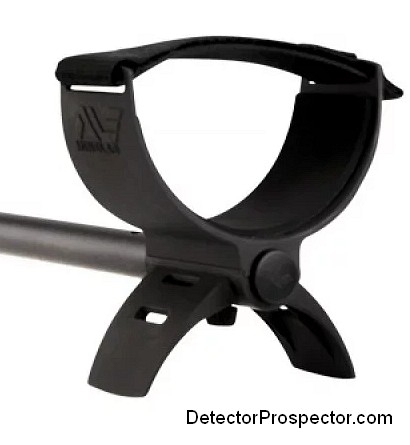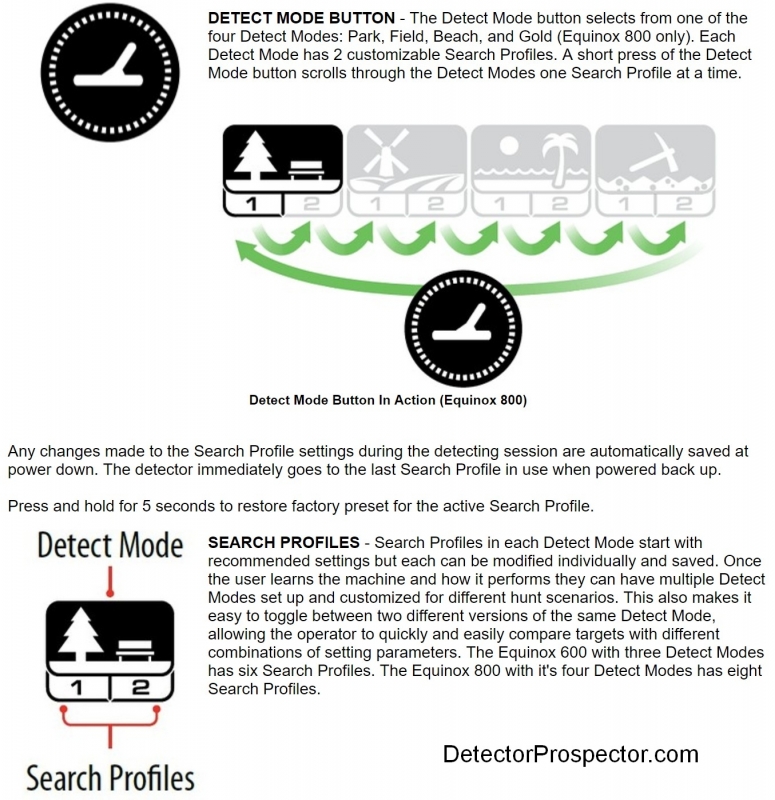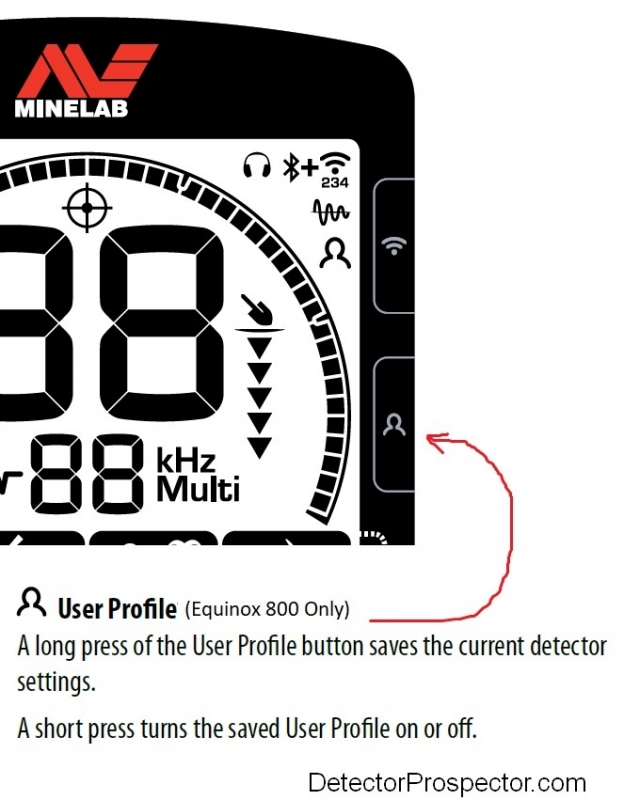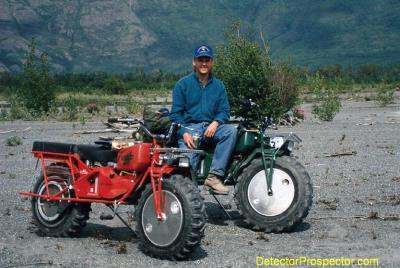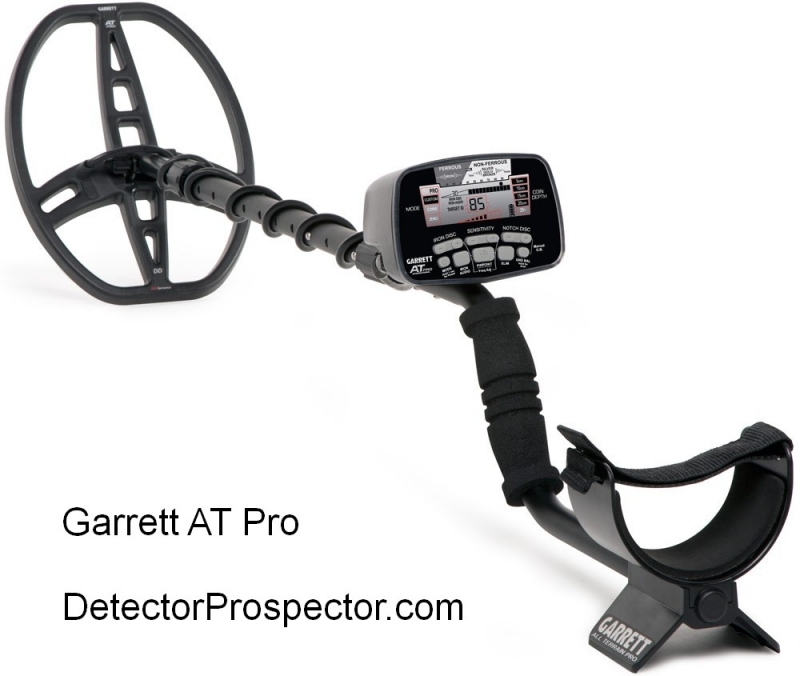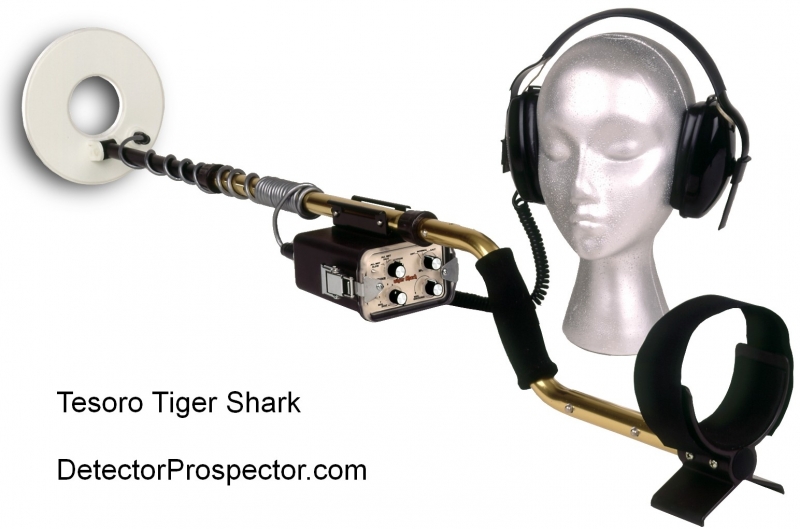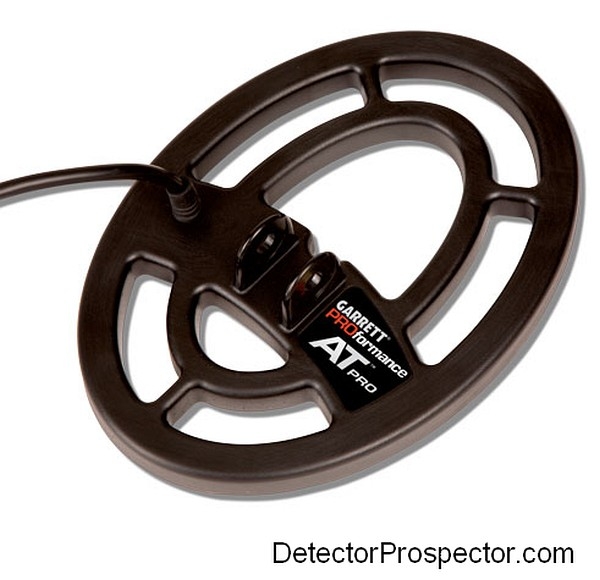-
Posts
19,761 -
Joined
Content Type
Forums
Detector Prospector Home
Detector Database
Downloads
Everything posted by Steve Herschbach
-
My personal opinion is that VLF detectors are second tier devices for the underwater mineralized environments where I would normally hunt. Specifically Hawaii and Lake Tahoe. Both these locations have highly magnetic ground components; in the case of Hawaii the main culprit is volcanic basalt and at Tahoe high magnetite content soil and rocks derived from the surrounding granitic mountain materials. Hawaii in particular I hunt regularly, and I have tried a variety of machines there over the years. My history regarding beach detecting has been loosely published on my website and documents my experimenting over the years. If you truly wish to know my personal perspective as regards beach detecting here are some direct personal reports: Gold in Hawaii Winter 1999 Garrett Infinium in Hawaii February 18, 2003 White's Surf PI Pro & Platinum in Hawaii December 18, 2004 Beach Detecting with Minelab GP 3500 Fall 2005 White's M6 & Surf PI Pro in Hawaii December 20, 2005 Minelab X-Terra 50 at Cabo San Lucas Spring 2006 Gold and Silver with the Garrett ATX November 2013 Garrett ATX Review - Beach Detecting In Hawaii February 4, 2014 Garrett ATX Return to Hawaii April 10, 2015 A later summary of my thoughts can be gleaned from this article I wrote in January 2014, the Prospector's Guide To Beach Detecting. In that article I state: "I am a PI guy myself however. I have used the Garrett Infinium extensively trying to deal with salt water and volcanic sand and hot rock conditions in Hawaii. I have had success with the model but it is difficult to deal with, suffering from an inability to ground balance into the salt range and susceptibility to EMI interference. Huge numbers of posts exist on how to try and get an Infinium to behave in salt water. The new ATX has taken steps to address these issues but the jury is out there yet. I will be giving the ATX a good go in Hawaii soon. My latest water detector is a White's Surf PI Dual Field to back up the ATX. I have had good luck in the past with the White's Surf PI models and recommend them for people interested in a waterproof beach PI. Again, a simple unit that gets the job done, and at a bargain price." There is nothing about the Equinox that changes my thoughts on pulse induction versus VLF in a highly mineralized beach hunting scenario. The Garrett ATX is at this time my preferred device for these scenarios (I guess I need to update that last link a little). Minelab currently does not make an underwater pulse induction detector that appeals to me. The SDC 2300 is very expensive and is genuinely more of a prospecting device, my main issue being the very high price, which makes me leery of subjecting it to continuous use in saltwater. It also floats like a cork. What I would really like to see from Minelab would be a stripped down GPX 5000 circuit stuffed into a CTX 3030 housing and that weighs no more than a CTX 3030. It would need a new range of waterproof coils to match. I think this would be a great beach machine proven mostly by the large number of people already using GPX detectors to hunt on beaches. Those people would prefer a waterproof machine with the same performance and I have no doubt relic hunters and more would sign up for such a device. If I could get that machine out of Minelab, it would replace my Garrett ATX. For now however the Garrett ATX will continue to be my preferred water hunting detector. Oh yeah, back to how less powerful VLF detectors play into my thinking. I am willing to settle for them when my desire for discrimination outweighs my desire for sheer power. That being the case a secondary bonus would be that such a device will likely be lighter than my 7 lb ATX. The Minelab Equinox at a compact 2.9 lbs really floats my boat as such a second tier type device. It can easily without taking up almost any room or weight act as a backup to the ATX. Or, in cases where I am in a more casual mood, or perhaps traveling to a low mineral location like Florida, it would actually move into being my primary beach detector. I may be going to Florida this winter, and if so I would prefer to take the Equinox with a 15" x 12" coil instead of the ATX. In general pulse induction offers less benefit in clean white sand type scenarios, and so if I were to visit a Bahama type location like Grand Cayman or anywhere else where the beaches are white as snow the Equinox would move ahead of the ATX as my preferred beach detector. I have had a couple Excaliburs and a couple CTX detectors. I just sold my last CTX and I do not intend to get another of either of those detectors again. The Equinox 800 will far better serve for me as a complementary VLF water hunting device to my preferred PI water hunting device. That will likely continue to be the ATX unless Minelab comes out with a good, solid waterproof PI detector. And truth be told, I am keeping an eye on the new Manta project at Fisher. Once upon a time I would still have been looking to White's for an underwater TDI Pro, but I have given up hope on that one. I think what I like most about the Equinox 800 as a beach detector is that it offers me the capability to hunt effectively in saltwater while also giving me the ability to run hotter up on dry sand while hunting micro jewelry. This is another part of my beach detecting story over time and is best revealed in my links above regarding the Minelab X-Terra 50 and White's M6. The Gold Mode and the 40 khz option while in the Park or Field modes has massive potential for hunting micro jewelry.
-
How high is high? I opined on that back in September... http://www.detectorprospector.com/forum/topic/4208-minelab-equinox-unveiled/?page=9&tab=comments#comment-45568 I will be frank. This is all going to be hair splitting stuff in saltwater due to the limitations imposed by a saltwater environment. Sand composition and even salinity are at minimum two factors that vary in all locations. Anybody desiring crystal clear answers will have to wait until Equinox is in the hands of at least dozens of well known third party water hunters at various locations around the country if not the world. That is where the final sorting and final consensus answers will develop. You have to remember that from Minelab's perspective, it does not matter in the end if some people decide they still prefer the Excalibur, others the CTX, and many the Equinox. They are highly focused on competing with the competition, not themselves. I have had Equinox on both highly mineralized salt water beaches and freshwater beaches. I have been pleased and impressed with what I saw. But I was not dragging a CTX and Excalibur around with me and trying to decide which was better. People still argue about which is better in the surf, an Excalibur or a CTX, and they have had years to sort it out. There is no way that discussion will be resolved at this point as regards Equinox, especially since the firmware has still not reached a final resting place. The Equinox for me personally is a detector that exists as a totality of its features and performance. It comes closer to superb across the board performance under a wider range of situations than any VLF detector I have ever used. But that does not mean it is absolutely perfect at everything. When this all shakes out there will be areas of unquestioned superiority and areas of "only" top notch performance. And then no doubt some areas that are just "good enough". Where those areas lie will vary by location and individual. I am one of those people that thrive on nuance and so I avoid the easy stock answers because I think that they are misleading and precisely the hype that people say they hate - and yet crave. A lot of that comes from me being realistic and knowing that I don't have all the answers and can't possibly address how Equinox will perform everywhere under all conditions. I don't think anyone can if they are being honest. At the end of the day being an early adopter involves a certain amount of risk, and no amount of testing by handfuls of people can eliminate that. If you look at all that Equinox offers as a whole and still have doubts - just wait it out. Your current detectors will continue to work and life will go on. And when enough people around the world weigh in you will be on firmer ground. If however you want ironclad assurances of exact performance differences it is unfortunately not something I can in good faith give you without at least another year of use myself in more varied locations and circumstances. The basic reason is I have never had and do not have a final, completed machine to even report on. Nobody does.
-
Yeah, kind of like the way you can adjust the tilt of a bicycle seat by flipping a lock lever. And on some models they could even offer different grip options that lock around a simple narrow rod providing a good fit for hands large and small.
-
Good question. I have been using the Equinox 800 exclusively since in theory the Equinox 600 is just a subset of whatever exists in the Equinox 800. My assumption therefore has been that the three Detect Speed (similar to Reactivity on a Deus) simply reflect "Slowest, Medium, and Fastest" which would equate to 1, 4.5, and 8 on the Equinox 800. The extra levels on the 800 I assumed are just for better fine tuning between those levels. But now that you ask the question I realize I honestly do not know. The more I think about it the more that I think that would not make sense. The fastest and slowest Detect Speeds are both quite extreme, and so having three settings that are more functional in a range of normal situations makes more sense for the Equinox 600. Otherwise you would find few situations where anything other than the middle setting of 2 would ever be used. Hopefully I will be able to clarify that soon. Thanks for asking - and welcome to the forum! One thing for sure - I don't see anyone being disappointed with the speed of the Equinox. Lightning fast in dense trash and that's no exaggeration.
-
That basically sums it up Redneck. At 2.9 lbs most people will have no issues swinging this all day, day after day. Weight and balance gets tricky. If you go as light as possible a detector will usually be nose heavy to some degree. This can be offset with weight under the elbow, but then the weight goes up. Minelab cheated and gives you the ability to have your cake and eat it too. The detector is designed first to be light in weight. However, slots were added to the footrest to make it easy to strap external batteries, counterweights, or both combined. I may experiment with this myself with the larger 15" x 12" coil when it is available. As far as grip angle and such, that never seems to suit everyone. It is fairly obvious from all the videos that the Equinox is designed to be swung like any other detector. Works for me - your milage may vary.
-
I agree totally Brian! Original post reproduced by Minelab with permission.
-

Screen Protector Use Underwater?
Steve Herschbach replied to TedinVT's topic in Minelab Equinox Forum
One of the coolest features of the Equinox is it comes with screen protectors right out of the box. The very first thing I like to do with any new detector is apply a screen protector. Yet that usually means cutting one to fit, and it is easy to not get around to it. And then later regret it did not happen. No worries about that now, and better yet, the screen protectors act as language labels for the settings icons that honestly make no sense to new detector users. Great idea! Anyway, I have used the CTX 3030 underwater for many days of operation and never had an issue with water intruding between my screen protector and the screen. I doubt that would be a problem unless something really unusual occurred. -
No apology required! I just like everyone on the forum to get the benefit of answers to questions. I often will restate questions I get via PM or email into forum threads. Thanks for joining and thanks for the question!
-
Hi Tom, Had to get this cleared just for you. The following is 99% certain at this time (MF = Multifrequency): Equinox 600: Park Mode – MF, 5, 10, & 15 kHz Field Mode – MF, 5, 10, & 15 kHz Beach Mode – MF only Equinox 800: Park – MF, 5 ,10, 15, 20, & 40 kHz Field – MF, 5 ,10, 15, 20, & 40 kHz Beach – MF only Gold – 20 & 40 kHz single frequency modes only So yes, Equinox 800 has both 20 khz and 40 kHz disc modes via the Park and Field modes. Ask, and sometimes you receive!
-

Multi-IQ Frequencies & Tones
Steve Herschbach replied to Cabo Chris's topic in Minelab Equinox Forum
GB is correct - tones and frequencies have no relation to each other. Tones are for target id and are tied to target id numbers. Everything known about the frequencies and how they work is collected here and I update it when new information is available. Only Minelab knows the real story and only Minelab should be believed on any of this. I promise more details will be coming very soon. I the meantime, here are a couple articles I wrote to learn more about the subject: Selectable Frequency & Multifrequency Explained Selectable Frequency & Frequency Spread -

Not Sure If It Is True Regarding Delivery Dates
Steve Herschbach replied to Buzzard's topic in Minelab Equinox Forum
Believe absolutely nothing from anyone EXCEPT MINELAB regarding delivery dates and availability. If you do anything else you will make yourself crazy chasing rumors. -
Derek, welcome to the forum! Folks, this is the Derek & Sharon McLennan of the DUG THAT OFFICIAL MINELAB EQUINOX 800-600 GROUP who are based in the U.K. Looks like we had it figured right but no way to know about the pin lock hole size being different without trying and pictures say it all. Thanks for joining and chiming in! My one trip to the U.K. was fantastic and I hope to return someday.
-

Number Of Saved Profile Slots For Custom Settings
Steve Herschbach replied to martygene's topic in Minelab Equinox Forum
Equinox 600 has three modes - Park, Field, and Beach. Each mode has two saved "Search Profile" options or slots for a total of 6. Any change made to a Search Profile made during a detecting session is automatically saved when the detector is powered down. The Equinox goes immediately to the last Search Profile in use when the detector was powered down. Equinox 800 has four modes - Park, Field, Beach, and Gold. Each mode has two saved Search Profile options or slots for a total of 8. There is also a shortcut button to a "User Profile" which can save a copy of any mode separately for instant access. The Equinox 800 therefore actually has the ability to save nine collections of settings. Any Search Profile May be reset to factory default at any time. In addition, the entire detector can be restored to factory default condition at any time. Click for larger versions.... -
Any video online right now is of a prototype, and the Detectival videos shows dozens of detectors operating in close quarters. The noisy operation there is probably interference. Regardless, the Equinox is quite normal as regards sensitivity. Just push it as high as you want. For some people that means getting to the edge of unstable then backing off one. For others it may mean running a little noisy. My experience is that Equinox can be run hot yet quiet in normal ground and electrical environments, only needing to back off in unusual situations, like extreme EMI (electrical interference) due to close proximity to power lines or some such. In severe ground some reduction of sensitivity may be required. Bottom line nothing unusual or unexpected in this regard.
-

Number Of Notches / Target ID Range
Steve Herschbach replied to ricardoman's topic in Minelab Equinox Forum
I don't know that it has been settled on since that can be left to the last second. I am pretty sure there will be only one version internationally so it will have to work for everyone. Still, with multiple profiles you could do different defaults and so that is not a bad idea. On the other hand it is so easy to modify, and the settings save automatically on power down, it is not a huge deal. The obvious most simple default internationally is ferrous/non-ferrous and go from there. Great question and thanks for bringing it up! -

Number Of Notches / Target ID Range
Steve Herschbach replied to ricardoman's topic in Minelab Equinox Forum
This is one of those pictures say it all things. Bottom line - nearly twice the target id resolution as the X-Terra 705 (50 versus 28 segments), with each segment independently notchable (a new word definition?). Personally I think this is a good compromise between resolution and target id stability. The target IDs range from -9 to 40 arranged in an arc for better on screen visibility. The arc is divided into what I am calling"zones" (my term - I don't know what if anything Minelab calls them) for easier identification. When you notch in and out the segment will flash and the target id number will display so no worries knowing where you are. -

This Is Shocking Detector News!
Steve Herschbach replied to Cabo Chris's topic in Minelab Equinox Forum
We obviously share a twisted sense of humor - kind of sick and hilarious at the same time! -

Just To Add Fuel The Equinox Fire...
Steve Herschbach replied to Cabo Chris's topic in Minelab Equinox Forum
Welcome to the forum Chris! I am back now and am going to plow through the backlog starting with oldest first. I personally am not worried about Equinox from a performance standpoint. I just know how water hunters are when it comes to gear and the Excalibur as a true diving detector will continue to have fans, just like the CTX and E-TRAC etc will continue to have fans. It will be interesting to see how it all sorts out over the next year - that's part of the fun as far as I am concerned! -
Them's some fine looking chunks of gold pardner Those Rokons are something else - was a dealer back when they had just reopened the business, but unfortunately the parts backup was non-existent at the time so we had to drop them after a couple years. Here I am back in 1993 on the floodplain of Knik Glacier outside on Anchorage on a ride with my wife. She handled it fine on easy terrain but it is something else trying to handle them in the really rough stuff since there is no suspension beyond tire pressure. The big advantage as you know is following goat trails on steep slopes that would tip an ATV over sideways in a heartbeat and navigating in dense trees and such where a regular ATV cannot pass.
-
When the AT Pro came out in 2010 it turned the industry on its ear. A lightweight, inexpensive metal detector waterproof to ten feet, that did not skimp on features including a LCD readout, speaker, and interchangeable coils. Up to then underwater detectors were more akin to the Tesoro Tiger Shark - heavy, feature limited, expensive, and usually with hardwired coils and headphones. The Garrett AT Pro basically created a new category of detectors - the All Terrain (AT) detector, as much at home in the water as on land. Many manufacturers are still trying to catch up to this seven years later. The AT Pro as a detector however is a 15 kHz discriminating type VLF with no true prospecting mode. That is not to say you cannot find gold nuggets with it. You can. If your intend on maybe going nugget detecting but might not ever get around to it, it might serve. However, if you really intend and want to put in more than a couple days a year nugget detecting there are better options like the 18 kHz Garrett AT Gold. Just about everyone makes a 18 - 20 kHz do it all prospecting detector as listed at Nugget Detector Guide. People have favorites for various reasons but I can grab most any 18 - 20 khz VLF detector and do about as well personally running any of them so I will defer to others as far as the picking of favorites.
-

Deepest Detector On Coins
Steve Herschbach replied to gold coins's topic in Metal Detecting For Coins & Relics
Excellent advice from Rick. All I wanted to add is this link to a previous thread on the subject. How Deep Can I Detect Coins & Relics? -
I have heard of this happening. One possible cause is that the headphone jack is wired to the speaker such that inserting the headphones repeatedly may have caused a weak solder joint to separate. The Gold Bug 2 is relatively easy to open and inspect. If you are under warranty this would in theory be covered but the mailing cost and time may not be worth it. This thread describes how to open up the control box for inspection.
-

Concentric 6.5"x9" Coil Available For AT Series Detectors
Steve Herschbach replied to a topic in Garrett Metal Detectors
I tried the concentric many years ago on the AT Pro on some magnetite laden ground. It is a very good coil on milder ground but it definitely had a harder time with the ground than a DD coil. Concentrics do have some advantages as regards the handling of bottle caps and other trash in a park type situation however and are worth consideration for sure. VLF Concentric vs DD Coils 6.5" x 9" PROformance Concentric Searchcoil For Garrett AT Pro, AT Gold, and AT Max (same part number all three models) PN: 2222600 -
An amazing and much sought after find by many detectorists for sure. Made more fun by the fact I had just heard from Brian before he made what turned out to be one of the best "last trips of the season" I ever heard of. A truly beautiful coin - congratulations Brian! It may be like nugget hunting also in that the first one is by far the hardest. I suspect more gold coins are waiting in your future!!
- 30 replies
-
- gold found
- stories trips adventures
-
(and 3 more)
Tagged with:

